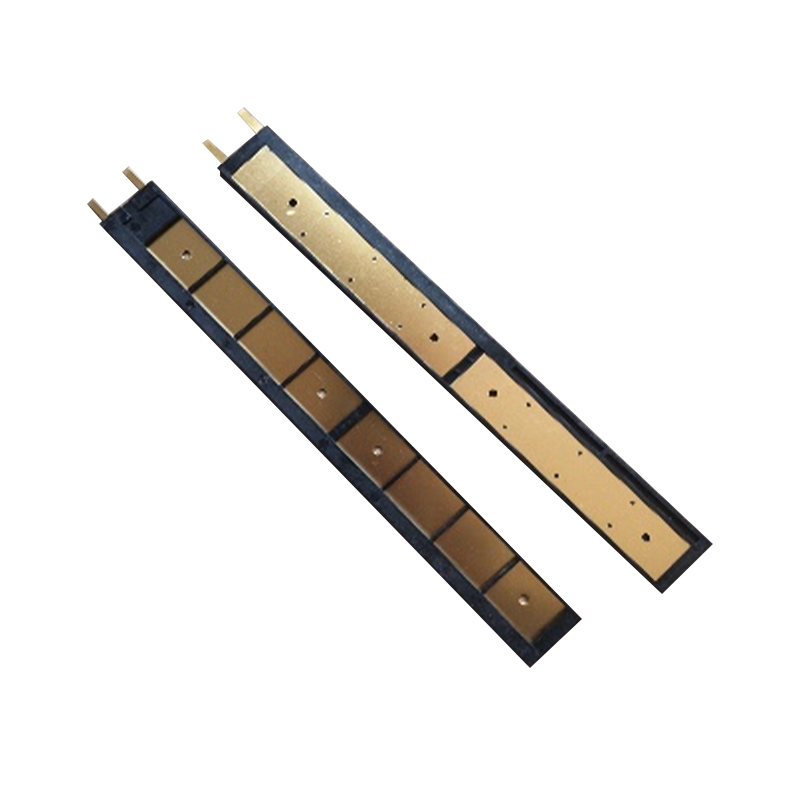
Injection molding electrodes are the hidden champions of precision manufacturing.
Publish Time: 2025-08-19
In injection mold manufacturing, electrodes, as the core tool in electro-discharge machining (EDM), directly determine the machining accuracy and surface quality of the mold cavity. As high-end manufacturing industries like aviation, automotive, and electronics continue to demand ever-increasing mold complexity and functionality, technological innovation in injection molding electrodes has become crucial for overcoming manufacturing bottlenecks. This article will analyze how injection molding electrodes are reshaping the mold industry through precision manufacturing, focusing on process advantages, customization capabilities, and industry applications.I. Process Advantages: Technological Breakthroughs from Micro-Erosion to Macro-Precision1. Non-Contact Machining, Pushing Material LimitsEDM removes material through pulsed discharges between the electrode and the workpiece. This characteristic makes it ideal for machining high-hardness materials such as carbide and hardened steel. For example, in the manufacture of automotive engine intake manifold molds, electrodes can precisely machine complex structures such as deep grooves and narrow slits, avoiding workpiece deformation caused by cutting forces associated with traditional milling and ensuring cavity dimensional accuracy within ±0.01mm.2. Surface quality comparable to polished-grade standardsAdvanced electrode design combined with optimized discharge parameters enables machined surface roughness to Ra 0.8μm or less. For example, in a mobile phone case mold, the electrodes undergo a stepped discharge process, first rapidly removing excess material with coarse precision, then applying fine precision to layer-by-layer finishing. The result is a uniform, scratch-free, and mirror-like finish, eliminating subsequent polishing steps and shortening production cycle time by over 30%.3. Complex structures are molded in one go, reducing assembly errorsFor mold cavities with irregularly shaped holes and intersecting grooves, traditional machining requires multiple steps. However, electrodes can be fabricated in one go using a monolithic or inlaid design. For example, a medical injection mold manufacturer employed combined electrode technology, streamlining a process that previously required five clamping steps to a single one. This reduced assembly errors from 0.05mm to 0.01mm, significantly improving mold assembly accuracy.II. Customization Capabilities: Seamless Transition from Drawing to Finished Product1. Drawing-Based Prototyping: Rapid Conversion from CAD Model to Electrode BlankModern electrode manufacturing relies on integrated CAD/CAM systems, which can directly read mold design data and automatically generate electrode contours and machining paths. For a precision gear mold project, engineers used surface modeling software to extract cavity surface data, generate an electrode model, and then used a high-speed graphite machining center to complete the blank in two hours, a five-fold increase in efficiency compared to traditional manual programming.2. Sample Customization: A Flexible Solution for Small-Batch Trial ProductionElectrode customization enables rapid iteration for small-batch production needs during the new product development phase. A consumer electronics company used 3D printing to create electrode prototypes, combined with wire EDM for minor corrections. The company completed the entire process from design to prototype in just 72 hours, 80% shorter than traditional mold-opening cycles, providing technical support for its products to seize market opportunities.3. Embedded Processing: An Innovative Practice in Functional IntegrationIn high-end mold manufacturing, the coordinated processing of electrodes and embedded components (such as sensors and heater wires) is becoming a new trend. A new energy vehicle battery mold project uses a pre-embedded electrode design to simultaneously mold a temperature monitoring channel within the mold cavity, preventing subsequent drilling damage to the mold structure. The electrode's vent hole design also optimizes injection molding venting, increasing product yield from 85% to 98%.III. Industry Applications: Invisible Support for High-End Manufacturing1. Automotive Lightweighting: Precision Machining of High-Strength Steel MoldsWith the proportion of high-strength steel in vehicle bodies increasing to 60%, molds must withstand higher stamping loads. By optimizing the discharge gap and pulse energy, the electrode wear rate is reduced from 15% to 8% when machining hardened steel molds, while ensuring a cavity hardness of at least HRC 58, meeting the 2 million-cycle stamping lifespan requirement.2. Medical Injection Molding: Non-destructive Processing of Biocompatible MaterialsMedical-grade polypropylene (PP) requires extremely high mold surface cleanliness. Using a tungsten-copper alloy electrode, combined with ultrapure water processing media, effectively prevents contamination of the mold cavity by machining residues, reducing bacterial adhesion on the surface of injection-molded parts by 90%, meeting FDA medical certification standards.3. Optical Injection Molding: Achieving Nanoscale Surface PrecisionIn AR lens mold manufacturing, electrodes use a mirror discharge process to create microtextures less than 0.2μm on the mold cavity surface, increasing the light transmittance of the injection-molded product to 92%, a 5 percentage point improvement over traditional polishing. After adopting this technology, one optical company reduced lens distortion from 0.3% to 0.05%, reaching internationally leading levels.The Future of Precision ManufacturingFrom aircraft engine blade molds to 5G base station housings, injection molded electrodes are supporting the transformation and upgrading of the manufacturing industry with millimeter-level precision. With the widespread adoption of technologies such as graphite high-speed machining centers and intelligent discharge control systems, electrode manufacturing will develop towards higher efficiency, lower loss, and greater adaptability. In the future, the integration of composite electrodes with artificial intelligence programming is expected to further shorten the injection mold manufacturing cycle by 50%, injecting new momentum into the global manufacturing industry.

